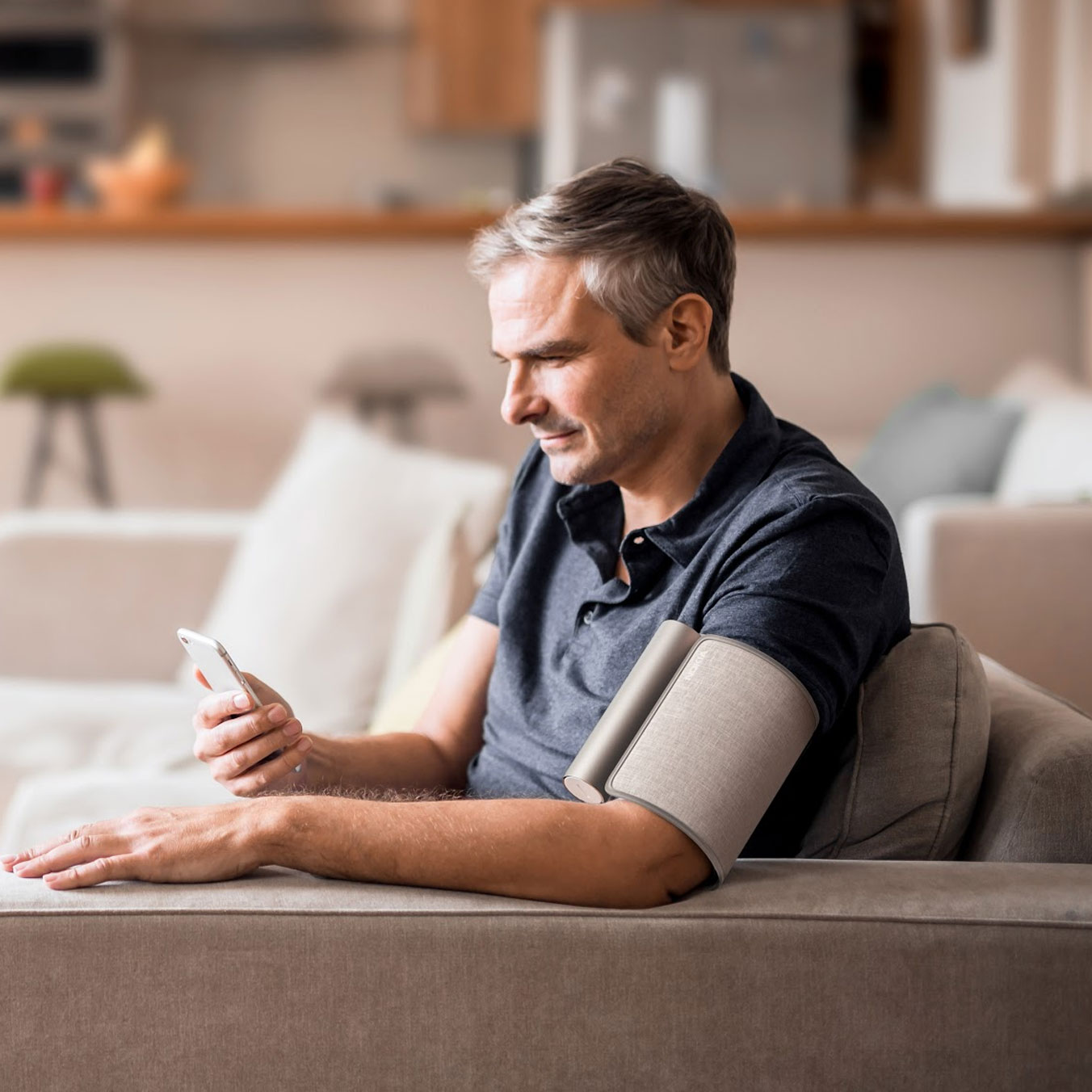
What is high blood pressure?
Hypertension is the most common chronic disease in the world. It is one of the major cardiovascular risk factors. In addition, it causes anomalies and stiffening of the arterial walls due to the permanent mechanical pressure exerted on them. Chronic hypertension increases the risk of stroke, coronary heart disease, heart failure, kidney failure and cognitive disorders.
Hypertension is usually “essential” i.e. it has no known cause. However, certain risk factors are linked to its onset such as age which is associated with a decrease in the elasticity of the arteries. Other risk factors include excess body weight, sedentary lifestyle or diet.
In 10% of cases, high blood pressure is called “secondary” as it is caused by another disease such as a kidney, adrenal gland, neurovascular or hormonal disorder.
Finally, in rare cases, high blood pressure can have a genetic cause.
Why is self-measurement so important?
The strength of home blood pressure measurement compare to the blood pressure measurement at the doctor office has been validated by the last recommendations of the scientific societies.
High blood pressure is often “silent” with no symptoms so that many people have hypertension without knowing it. Its measurement and monitoring may therefore provide a real benefit as they make it possible to detect high blood pressure earlier, before the onset of complications. However, some signs may be present and alert to the risk of high blood pressure. These include a constant headache or a severe headache in the morning, dizziness, blurred vision, palpitations, sweating and even nosebleed.
Furthermore, home blood pressure measurements are more representative of a person’s actual blood pressure which varies throughout the day, depending on physical activity. It is therefore necessary to take several measurements to obtain a reliable and representative mean value of a person’s actual blood pressure.
In addition, the home blood pressure reading is a better predictor of mortality and cardiovascular morbidity that blood pressure measurements made in the doctor’s office.
Note: Self-measurement is not recommended in patients with arrhythmias as this causes erroneous blood pressure measurements.
Your blood pressure is measured by two numbers. The first (on the left) corresponds to systole. This is when the heart contracts and ejects blood into the arteries. The second (on the right) corresponds to diastole. This is when the heart relaxes. The unit of measurement of blood pressure is the millimeter of mercury (mmHg).
Scientific studies show that the average blood pressure is higher when measured by a health professional than when taken at home. There are therefore two normal values of blood pressure depending on whether the blood pressure is measured at home or in the doctor’s office. At home, your blood pressure is considered normal when the average of your measurements is less than 135/85 mmHg. Your blood pressure measured by your doctor or pharmacist is considered normal when it is below 140/90 mmHg. When it exceeds these values it is called hypertension.
When your blood pressure is higher in the office than at home, this is called “white coat hypertension” or “white coat effect“. In general, this effect is more frequent in the elderly, in female subjects and in nonsmokers. This phenomenon is not particularly harmful to health, but it may lead to misdiagnosis of hypertension and cause overdosing of drugs.
Conversely, when your blood pressure measured at home is higher than in the doctor’s office, we speak of “masked hypertension“. Several factors can cause this phenomenon: young age, male gender, smoking, alcohol consumption, physical activity, anxiety, work stress, obesity, diabetes or a family history of hypertension. Unlike the “white coat effect” this situation presents a risk to health and it is important to talk about it with your doctor if you are concerned.
What’s the best time to measure blood pressure?
At home, blood pressure measurements should be done in the morning before breakfast (and before any medication) or in the evening before bedtime. Follow the instructions that appear when you use your blood pressure monitor for a step by step guide on how to correctly measure your blood pressure.
How can I reduce my blood pressure?
Besides drug therapy, certain lifestyle changes can help you reduce your blood pressure.
Examples of lifestyle changes to help you control blood pressure:
• Reduce your intake of salt, alcohol, and foods high in fat
• Lose weight if you are overweight
• Stop smoking
• Increase your fruit and vegetable consumption
• Get regular exercise
Indeed, beyond classic scientific studies, Withings research teams has recently presented a big study at the European Society of Hypertension Congress in Milano last June. Due to the data including 19,000 anonymous and aggregated Withings users, this study showed that the increase number of average steps of a user lead to a significant decrease of the blood pressure.
Want to go even further?
To improve self-blood pressure measurement, Withings has integrated Hy-Result to Health Mate. Hy-Result is the first software for self-interpretation of home blood pressure measurement results made by doctors specialized in high blood pressure management. It is based on an algorithm designed to help users of blood pressure monitors to interpret their results it of self blood pressure measurements. Learn more about Hy-Result.
“Hy-Result is the first software for self-interpretation of home blood pressure measurement results, taking into account both the recommended thresholds for normal values and patient characteristics.” — Dr Postel-Vinay, Hospital European Georges Pompidou in Paris
See data come alive
Withings has recently launched a feature in the Health Observatory that enables you to see — in real time — blood pressure rates of Americans. Built using anonymized and aggregated data of a random sample of 20000+ Withings users in the US, this map allows you to see which state has the highest level of blood pressure, what ages are affected and more.



